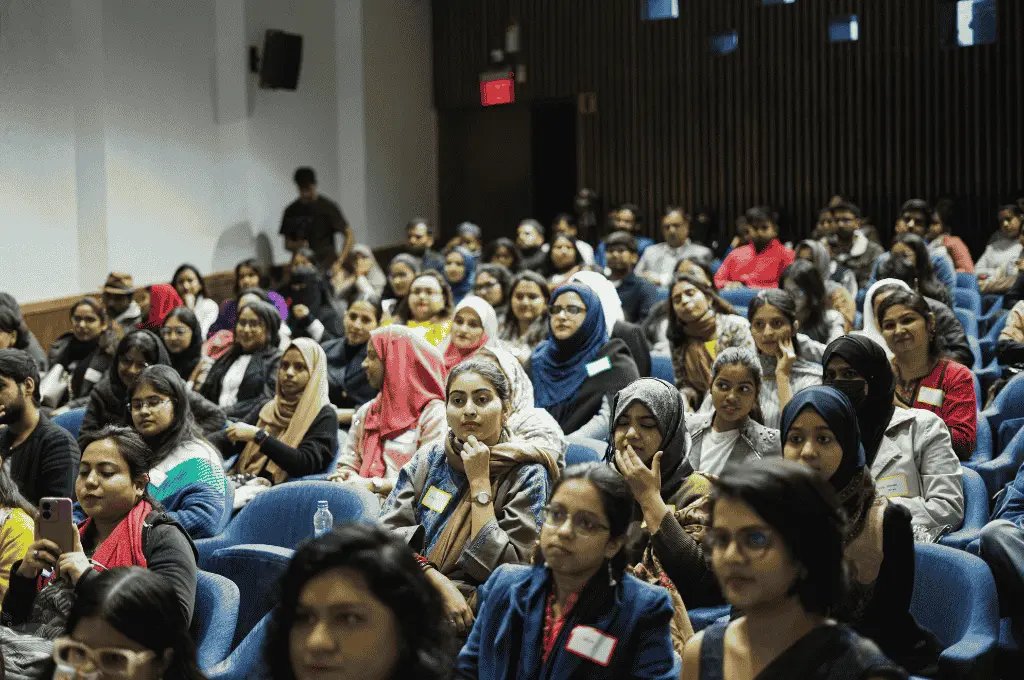I grew up in Arunachal Pradesh, surrounded by the gentle rhythms of the Tani language—a group of dialects that includes Apatani, Adi, Galo, Nyishi, and Tagin, spoken by the communities of the same names. In our home, Tani words mingled with laughter and song and each morning began with grandparents humming folk tunes in our mother tongue. Yet, even as a child, I sensed a quiet emptiness. Our dialects were unknown outside our valley. We heard Hindi and English in schools and the media, and people chose to speak Assamese in order to connect with the wider world.
I watched my parents make life choices in a shifting India. Outside of the home, we spoke Hindi to ‘get ahead’. At home, my mother slipped into our tribal tongue when elders visited. By the time I was in high school, something about this uneasy compromise felt wrong to me. I tried to speak in Tani, but was told in Hindi that it was only a local dialect. Even the geography of our land bore names that were not local: The beautiful lake a mile from my childhood home was named Ganga, while our elders called it Gekar Sinyi in Nyishi. These contradictions didn’t sit well with me.
As even remote Arunachalees watch cartoons online, the allure of pop culture in other languages attracts our youth.
After Independence, Arunachal Pradesh’s emphasis on national unity had brought with it new challenges. The mantra of ‘one nation’ often translates locally into ‘one language’—predominantly Hindi or English. Just over 13 lakh Tani people in Assam and Arunachal Pradesh speak dialects such as Nyishi, Galo, Apatani, Adi, Tagin, and Mising. While these dialects are central to the Tani people’s identity in the region, linguists and scholars have raised concerns about their gradual decline. Mass media and national curricula have eclipsed local speech. The education policy follows a three-language formula (English, Hindi, and regional), but many tribal districts lack schooling in native languages. Scholars have found that young children learn best when taught in their mother tongue, yet our policy lacks this focus. Villages have government schools with textbooks in Assamese or Hindi, and few classes in Tani dialects. Globalisation adds another layer: As even remote Arunachalees watch cartoons online, the allure of pop culture in other languages attracts our youth. By contrast, our own traditions remain confined to village ceremonies or fading tapes.


Some of us sought to change this. The opportunity arrived in early 2024, when I was studying at an engineering college. Madhurjya, my linguist friend, was working on the conservation of the Ahom language. His efforts to revitalise his language inspired me to do something similar for Tani. After nights of discussion and ideation, we founded the Tani Language Foundation (TLF).
The vocabulary of an endangered language
Before long, we were turning to our grandparents’ memories for the definitions of Tani words. Madhurjya Burhagohain helped me connect with the Endangered Language Project, which then trained TLF members in archiving and community engagement. We also brought in more students from the Tani community for support. Initially, there were only five of us, and each took on a small task. I volunteered to type up words on my laptop, another friend learned some coding for a mobile app, and a third reached out to village elders.
Word of our efforts spread quickly in the student networks. By mid-2024, we had nearly 30 members—college students, recent graduates, even some high-schoolers—all united by one goal. I remember when our WhatsApp group membership ballooned: Messages suddenly poured in, with voices from villages as far as East Kameng. We met on Saturdays in the college’s small language lab or in each other’s living rooms.
We assigned roles for the members:
- One member coordinated lexicon collection, gathering and cross-checking vocabulary from elders and written sources.
- Another served as the village liaison, arranging visits and facilitating conversations with speakers from different communities.
- One member managed social media outreach, posting updates, sharing word lists, and engaging young Tani speakers online.
- Others supported tasks such as digitising notes and archiving recordings.
However, we still had our doubts and had to overcome a few hurdles:

a. Losing and gaining steam
We had no funding, no official registration, just passion and laptops. We spent weekends copying data into digital spreadsheets. Most of our early equipment was donated or borrowed. Initially, we feared losing momentum.
Some team members took up part-time jobs to contribute, but long-term funding was scarce. When we shared these issues publicly (through our group chats and social media), friends, relatives, community members from both Arunachal Pradesh and Assam, and even people we only knew through cultural networks donated through UPI. We met our funding target well before the campaign deadline.
b. Balancing diversity in speech, language, and process
Our resolve grew each time an elder agreed to teach us a folk song or a linguist sent advice. We created an open space. We debated fiercely in meetings: Some senior members urged caution and academic rigour, while others pushed for quick, popular methods. For example, we argued whether to unify the Tani language into one standard form or to record and organise each dialect on its own terms, avoiding homogenisation. This tension emerged later with the script too. We discussed if we should adopt one writing system or allow a group of dialects to use scripts that fit their sounds.

After many negotiations, we agreed that, instead of imposing a top-down model, we would start by creating a common vocabulary and digital library, inviting each community to retain its dialect and scripts.
Most of us were students learning linguistics on the fly. We made mistakes, sometimes pushing an initiative without full research, or feeling frustrated when linguistic experts called for more analysis. We adopted a hybrid model, pairing volunteer native speakers with linguists. Listening was key. We listened to villagers who said classes were too slow, and to linguists who cautioned us when our proposed alphabet ignored tone distinctions.
c. Building a dictionary of known and unknown words
In late 2024, we created a living dictionary (a database that expands as a language evolves) in collaboration with the Living Tongues Institute for Endangered Languages. We began with a list of known words and then assigned tasks to members. The lexicon coordinator completed survey sheets and word lists, while the village liaison organised trips to other Tani-speaking regions.
Before adding neologisms to the dictionary, we had them checked by elders and community members.
Small groups visited villages with tape recorders and smartphones, recording community elders’ spontaneous speech rather than rehearsed readings. We recorded each word multiple times to capture variations, having speakers repeat each word in a full sentence to confirm pronunciation and tone. Another team scrubbed the audio files, verified spellings with speakers through follow-up calls, and uploaded entries with both phonetic transcription and audio clips.
We also created new words where needed, and borrowed and combined available alternatives for objects such as ‘aeroplane’, which had no equivalent word in traditional Tani. We paired yobna (‘to fly’) with ami (‘person’) to create amikoyobna (‘one who flies’). Before adding these neologisms to the dictionary, we had them checked by elders and community members.
We are currently working with NoTopoMias, a collective of mappers based in Latin America, to document and map more than 100 indigenous place names in Arunachal Pradesh that were lost in bureaucratic records.
Placing our past in anime
Gradually, we realised that we needed to make learning more engaging. To reach young children, we dubbed popular cartoons and anime into Tani dialects. We noticed teens watching Hindi cartoons on their phones; animation clearly excited them. Could we engage them by offering similar content in their mother tongue? We began by purchasing episodes of popular shows, such as Doraemon and Shin-chan, and our young volunteers recorded and added Adi and Nyishi voiceovers to them. We posted these dubbed clips on TLF’s Instagram page and WhatsApp groups.

We targeted kids and teenagers because language learning ability drops sharply with age. We aimed to make Tani part of children’s everyday entertainment, so learning becomes fun rather than a tedious activity. Young people in towns eagerly shared the clips, laughing at old jokes in their own language. “It’s like seeing our story told in our words,” one teenager messaged us.
However, this cartoon project encountered copyright issues. We realised that dubbing even small clips without permission violated intellectual property laws. Our cultural goal wouldn’t shield us from lawsuits. We pivoted to a more sustainable model. With guidance from a media lawyer, we began creating original content instead. We are now collaborating with a local animation studio to script and produce short original cartoons based on Tani folklore.
Planning progress one step at a time
From TLF’s work, we have learned that language conservation is a collective effort that requires community collaboration and consent. Working together ensures accuracy and encourages participation. To anyone seeking to conserve their language, I say, start today and plan your path.
Start small: Draft a mission statement; gather the community together, even if it’s on WhatsApp, and engage them.
Become organised: Start thinking of what you want to be, a collective, a nonprofit, or a cooperative. Think in terms of roles, basic accounting, and managing data. Keep it simple.
Involve, listen, and grow: Train volunteers to interview community members and store data. Use these sessions to learn from the communities and volunteers. Additionally, start fundraising.
Think ahead: Structure your movement for sustainability with simple by-laws and partnerships and by creating a legal entity.
Over the next five years, TLF will take small, steady steps. We will continue village documentation, co-create primers and curricula with elders and linguists, scale our elementary programmes, and expand our volunteer base to support advocacy. We are also launching some new initiatives.
We aim to unite the Tani community by building bridges between the Tani people in Arunachal Pradesh and Assam. This will reduce friction and rebuild trust. We will explore the possibility of a unified Tani writing system and advocate for official recognition of the language in schools in Tani regions, so it is taught alongside Hindi and English. To foster a consolidated identity, we are launching a campaign urging Tani tribes to identify themselves as Tani in the next census.
We acknowledge that these are big goals, but we will lay the groundwork and learn as we go.
—
Know more
- Understand why language conservation is important for cultural conservation.
- Learn how Adivasi youths are using digital media to conserve their languages.
- Read Leanne Hinton’s How to Keep Your Language Alive, David Crystal’s Language Death, and Robin Wall Kimmerer’s Braiding Sweetgrass to learn more about language conservation.




